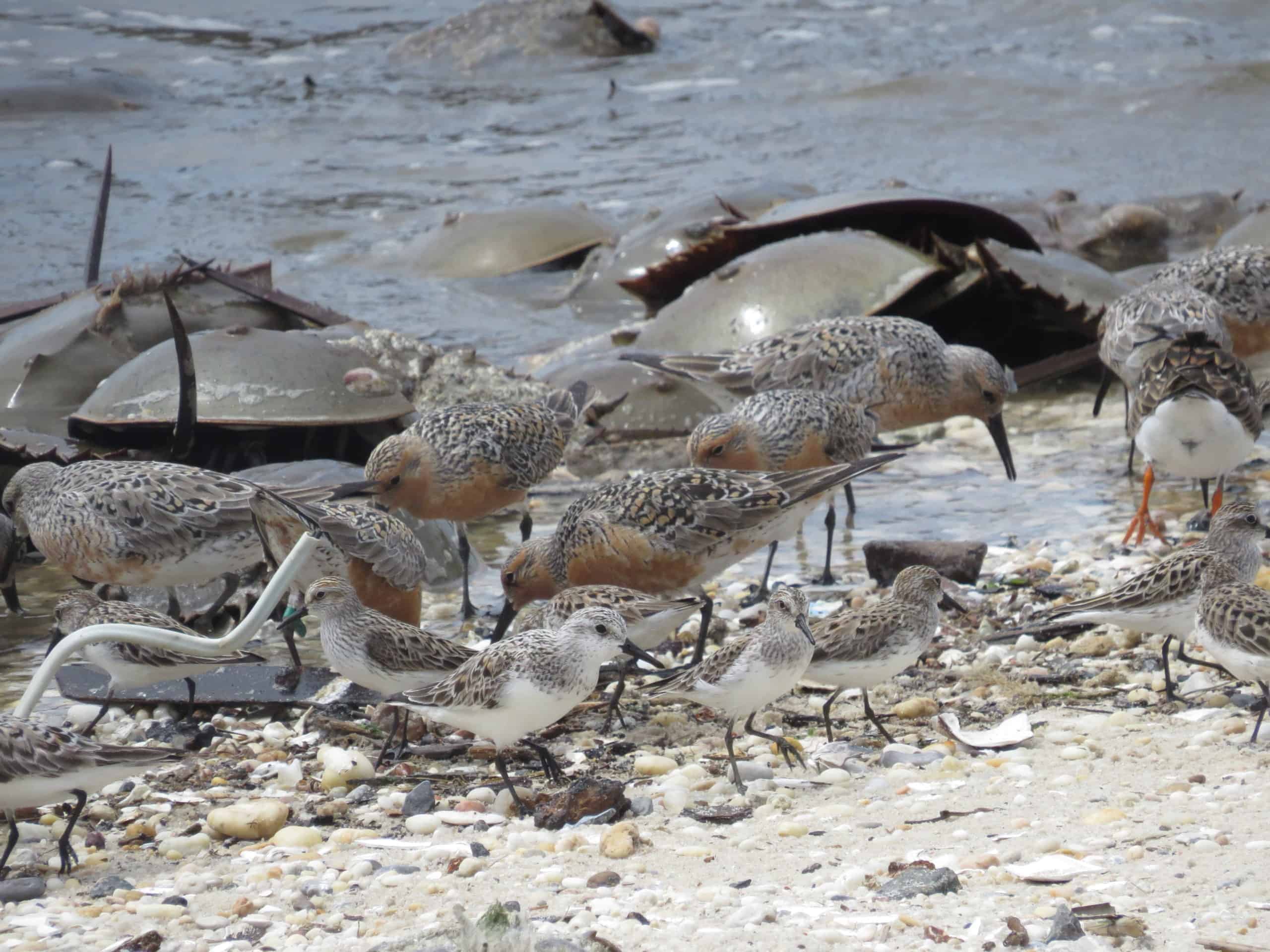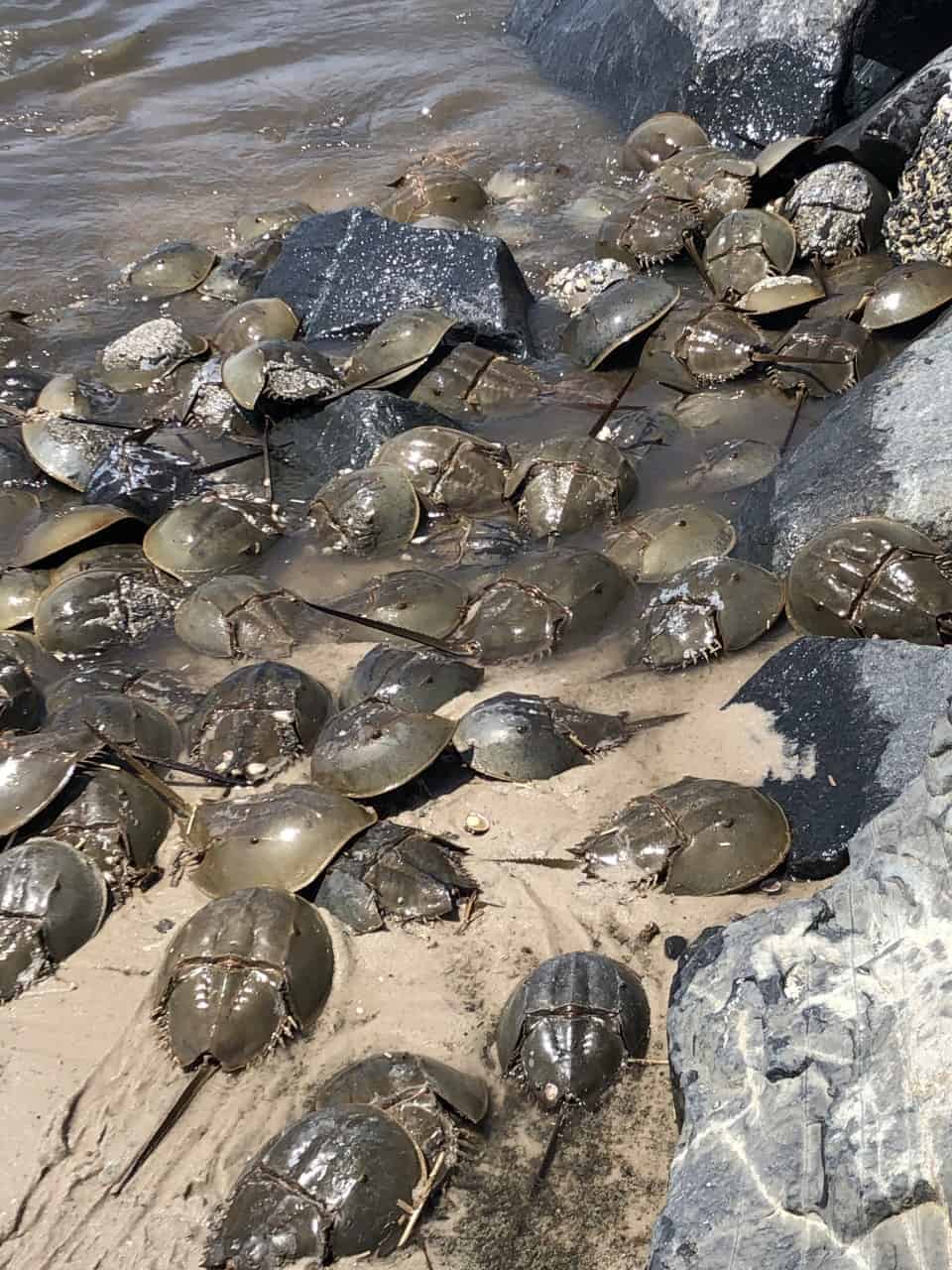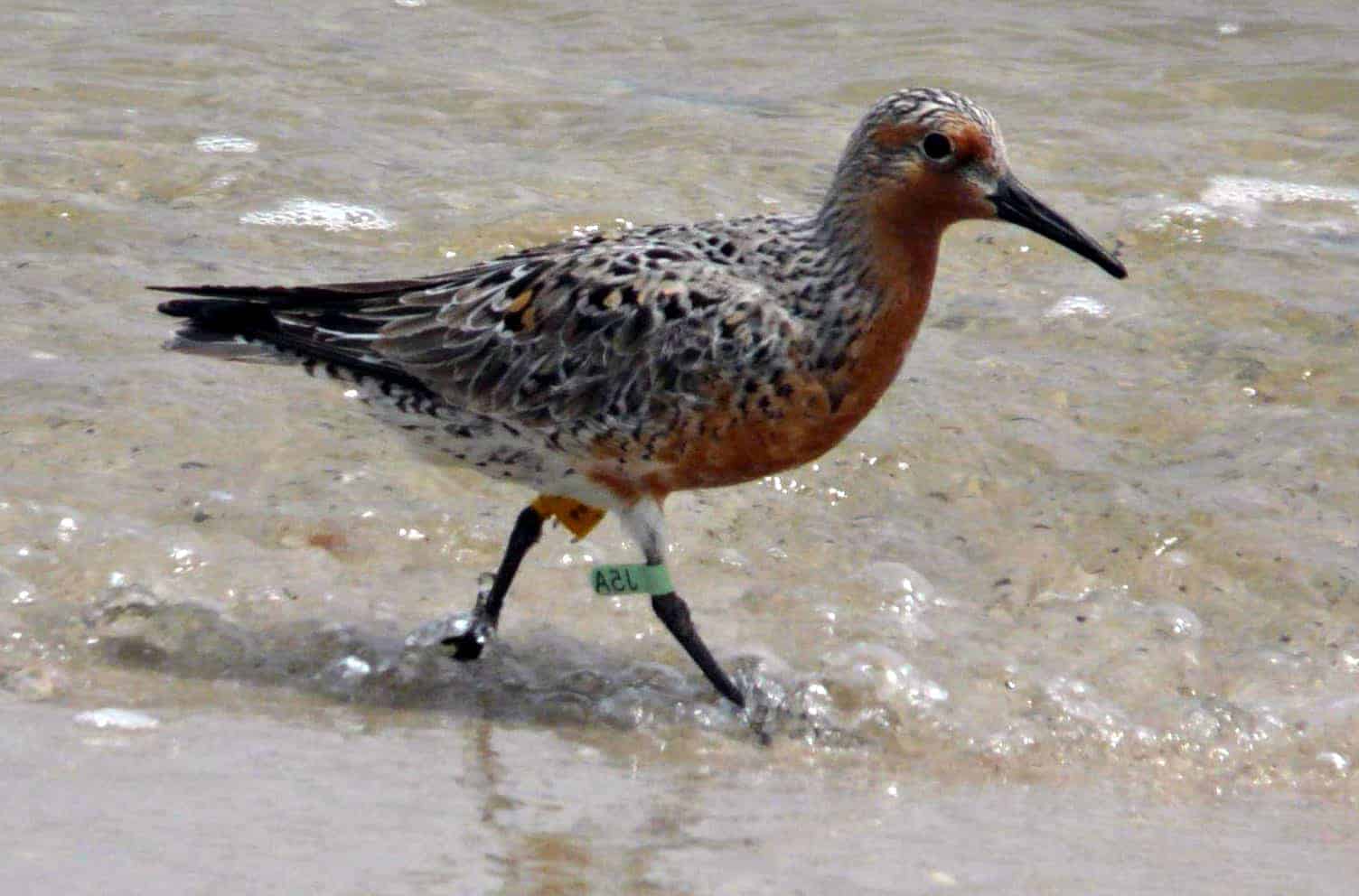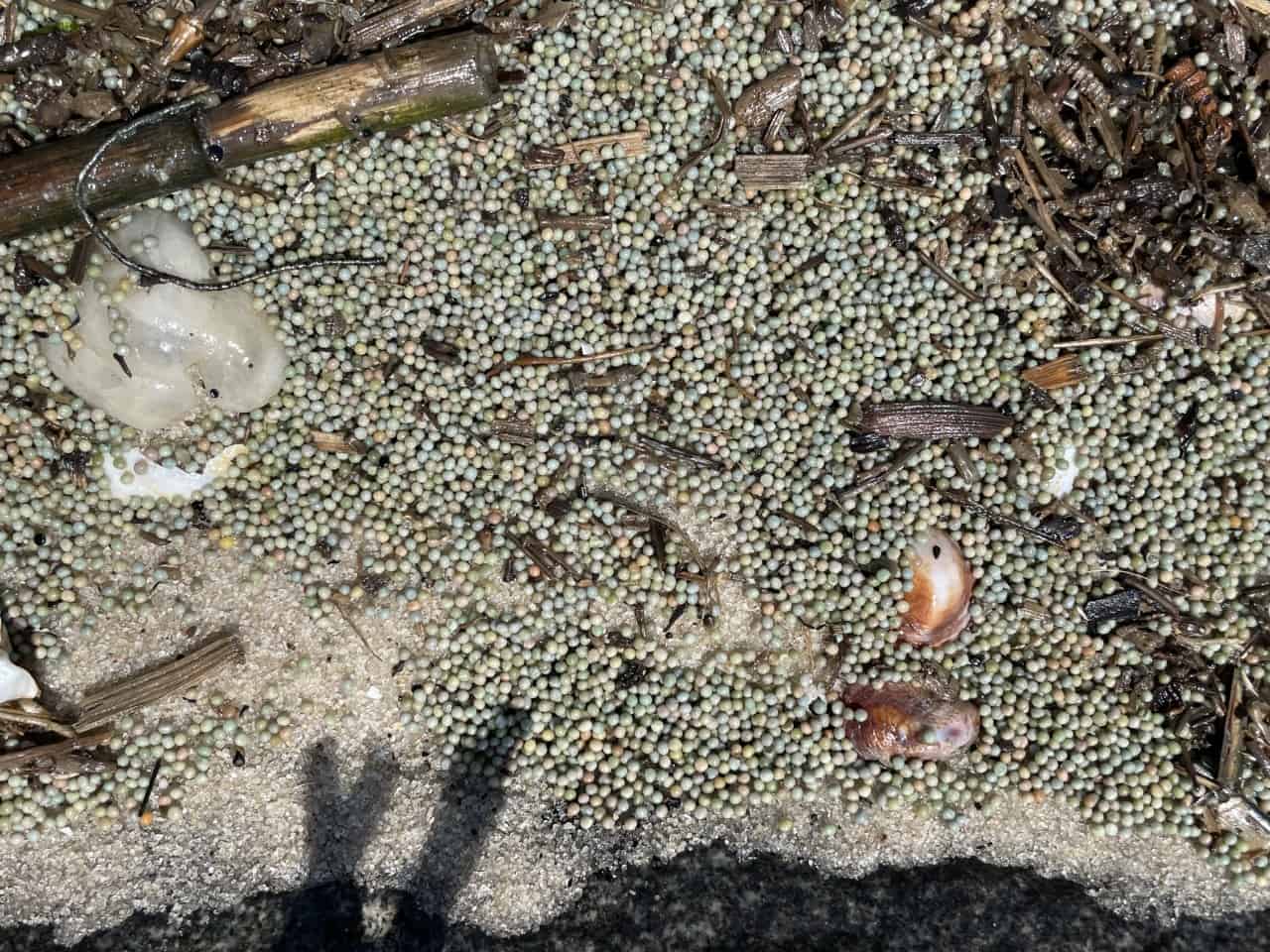Share this article
Long distance red knots experience mid-flight crab crunch
Red knots are among the great long-distance fliers of the world. Some of the best-traveled of these small shorebirds migrate all the way from the Arctic circle of Canada to the southern tip of South America at Tierra del Fuego and back every year, sometimes flying 4,000-5,000 miles without stopping.
But new research shows that these hardy voyagers may experience a strict resource crunch on their migratory stopovers that could be affecting their reproduction rates in the Arctic Circle. This could be an issue in at least one of these stopovers in Delaware Bay, since the birds are currently competing with the medical and fishing industries for horseshoe crab resources there.
“The birds can gain enough weight in seven or eight days, but only if there is good foraging the whole time,” said Joanna Burger, an ecology professor at Rutgers University.

Red knots feast on horseshoe crab eggs in Delaware Bay. Credit: Joanna Burger
For a study published recently in Environmental Research, Burger and her colleagues fixed geolocator devices on rufa red knots’ legs (Calidris canutus rufa) in Delaware Bay from 2009 to 2016. The devices recorded the amount of light and detected salt water to help determine where the birds were. The researchers recovered 104 of the geolocators upon recapturing red knots, providing at least a year’s worth of data.
Rufa red knots comprise three groups. While nearly all of them spend their summer breeding season near the Arctic Circle in Canada, one group winters in Florida, Haiti and Cuba. Another group winters along the north coast of South America in places like Brazil and the Guianas. The last group makes it all the way down to Tierra del Fuego.

Horseshoe crabs congregate on shore. Credit: Joanna Burger
Burger and her colleagues could determine which individuals had been incubating eggs by the amount of sunlight the geolocators received. When flying or standing, the birds—and their geolocators— would receive sunlight, since there’s about 24 hours of sunlight where they spend their summer. But when the birds were incubating their eggs, the sunlight was blocked as their legs were tucked under their bodies for roughly eight-hour periods at a time.
The devices revealed that fewer of the red knots that traveled from Tierra del Fuego incubated eggs compared to the other migratory groups. Meanwhile, the salt water detector informed researchers where the birds are feeding, since they prefer to eat in brackish water, and how long they spent there.
The data from the device revealed that red knots traveling north from the Caribbean and northern South America spent a lot longer in Delaware Bay fattening up on Atlantic horseshoe crab (Limulus polyphemus) eggs—often more than two weeks. The Tierra del Fuego birds, on the other hand, only spent about a week there before moving on.

A red knot with a leg tag. Credit: Joanna Burger
Burger said that the short stopover period for the latter group is likely affecting their reproductive success. While seven days may be enough time to fatten up for the next leg of their voyage to Hudson Bay in good conditions, small issues like storms can stop horseshoe crabs from coming into shallow water to lay their eggs during this period for days at a time. Even a three-day storm can cut their foraging time in half.
“It becomes important to have an overabundance of food,” Burger said. “They have to almost double their weight before they fly to the Arctic.”
Competing interests
But horseshoe crabs are a commodity for many besides just the red knots. The medical industry uses horseshoe crab blood for vaccines and other health products. The fishing industry also uses crabs as bait to capture eels and conch.
Currently there is a moratorium on harvesting female horseshoe crabs in an effort to maintain high numbers, but Burger said that industries are lobbying the government to allow for the take of females, which are twice as large as males. The take of males is already having an effect on crab population, which means that rufa red knots—considered threatened by the U.S. Fish and Wildlife Service—often lack resources mid-journey.

Horseshoe crab eggs. Credit: Joanna Burger
“The problem in Delaware Bay is overharvesting,” Burger said. “Females are what you don’t want to take in order to preserve the food source.”
Climate change also might be affecting the timing of migration stops and food availability. For example, the water of parts of Delaware Bay may be getting cooler in May, potentially affecting crabs. But Burger said that a longer study period would be needed to determine any potential negative effects.
Header Image: : Red knots feast on horseshoe crab eggs in Delaware Bay. Credit: Joanna Burger







